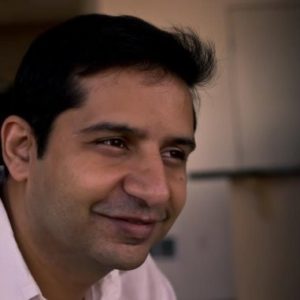Seed Capital
1Mby1M Virtual Accelerator Investor Forum: With Dennis Joyce of Alliance of Angels (Part 4)
Sramana Mitra: Given what you just said and if you’ll then look back on the deal flow that you have seen, I have a different question which is slightly off-center. Obviously we are at a time in history where there is a huge number of people who are unhappy and struggling and under tremendous stress. Their livelihoods are going away because of a lot of the things we’re doing with technology. Are you seeing deal flow with interesting concepts in addressing some of their pain?
Dennis Joyce: We see interesting products all the time that are addressing social issues. One is an app that helps with drug addiction and >>>
1Mby1M Virtual Accelerator Investor Forum: With Jeremy Schneider and Jonathan Pines of Webb Investment Network (Part 4)
Sramana Mitra: Some examples in your current portfolio.
Jeremy Schneider: There’s many. For example, PagerDuty is a company that we’re huge fans of and feel very lucky to work with. We met them through YCombinator but what made us really want them is, they had a great team.
Two is that Maynard struggled with this problem throughout his career. Every time he took on a new CIO role, one of the first things he has to do is to set up the alerting and on-call system to make sure that the infrastructure stayed up. When we heard Alex and Andrew pitching PagerDuty, we immediately knew that this was a pain point and something that >>>
1Mby1M Virtual Accelerator Investor Forum: With Anshu Sharma (Part 3)
Sramana Mitra: We’ve covered Nutanix extensively. Our community knows Nutanix very well. At what stage did you get involved with Nutanix?
Anshu Sharma: It was the stage at which it was just an idea. I had known and interacted with Dheeraj at Salesforce while he was at his previous company. He and I had done some work at Oracle. When Dheeraj started incubating, I was in the group of people that was the first check in.
From this investment, I learned that if you back a team that understands the market they’re going after, things work out well. Essentially, that set the template for me for every other investment. >>>
1Mby1M Virtual Accelerator Investor Forum: With Jeremy Schneider and Jonathan Pines of Webb Investment Network (Part 3)
Sramana Mitra: If you look at your last 15 months deal flow, what do you see? What are the highlights of the trends you see in your deal flow?
Jeremy Schneider: One thing that has been exciting for us is that WIN has been around now for about eight years. In 2017, we started to see repeat entrepreneurs come through our network. We were really excited to have the opportunity to back our founders again. That was one exciting trend on a high level.
As for sectors, last year we started to explore new areas as a team and with our network. We started seeing >>>
1Mby1M Virtual Accelerator Investor Forum: With Anshu Sharma (Part 2)
Sramana Mitra: Do you lead deals?
Anshu Sharma: In Silicon Valley, even $100,000 doesn’t really make you a lead in any meaningful sense.
Sramana Mitra: Depends on what stage. Maybe we should visit the stage question first and then come back to the size question.
Anshu Sharma: It’s not about leading or not leading. The way I think about it is I love being the first check in. That’s what people typically call lead. The classical angel investing is you put in $25,000 and value the company at a few million dollars and then hope for a quick next round so >>>
1Mby1M Virtual Accelerator Investor Forum: With Jeremy Schneider and Jonathan Pines of Webb Investment Network (Part 2)
Sramana Mitra: Let’s now talk about stage and how big is the fund that you’re investing from. What sized investments do you like to make?
Jonathan Pines: In terms of stage, we tend to focus on the seed stage. That’s not necessarily first angel money in but usually the first sizeable $1 million to $3 million round of funding. We invest around $500,000 in total between Maynard and the affiliates. In terms of how much investing we’re doing overall, we do about 10 new investments per year and then we also will write follow-on investments into our existing portfolio companies. We think of it, on a yearly basis, as a $5 million deployment.
Sramana Mitra: How many investments do you make a year? >>>
1Mby1M Virtual Accelerator Investor Forum: With Anshu Sharma (Part 1)

Responding to a popular request, we are now sharing transcripts of our investor podcast interviews in this new series. The following interview with Anshu Sharma was recorded in March 2018.
Anshu Sharma is an active angel investor who invests in Silicon Valley and India. Anshu has deep experience in the enterprise software space, and a thoughtful, sophisticated perspective. He is one of the early investors in Nutanix, which currently has a market cap of over $8.5 billion in the public market.
Sramana Mitra: Before we get into your investment activities, why don’t you tell our audience a bit about your professional >>>
1Mby1M Virtual Accelerator Investor Forum: With Dennis Joyce of Alliance of Angels (Part 1)

Responding to a popular request, we are now sharing transcripts of our investor podcast interviews in this new series. The following interview with Dennis Joyce of Alliance of Angels was recorded in March 2018.
Dennis Joyce, Investor and Member of Alliance of Angels, talks about the largest angel group in the Pacific Northwest.
Sramana Mitra: Tell us about your investing focus. How does the Alliance work? What is the focus? What sized investment do you like to make?
Dennis Joyce: The Alliance of Angels is the largest angel investment network in the Pacific Northwest. We have a rotating membership of roughly >>>
